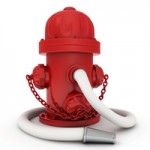 One of the key principals on the path to financial independence is to build up an emergency or “rainy day” fund. The purpose of such a fund is to provide you with a financial cushion in the event that you lose your job, are involved in an accident or are otherwise faced with significant unexpected expenses that your normal income can’t cover.
One of the key principals on the path to financial independence is to build up an emergency or “rainy day” fund. The purpose of such a fund is to provide you with a financial cushion in the event that you lose your job, are involved in an accident or are otherwise faced with significant unexpected expenses that your normal income can’t cover.
The traditional advice is to build up your emergency savings account until it contains at least six months’ living expenses. But given the increasingly longer times that many individuals are finding themselves out of work, you might wish to build up more than that.
Here’s some banking advice on how to set up your emergency savings account.
Find a No Fee Savings Account. Since the purpose of this account is to allow you to safely accumulate your emergency fund, you don’t need a lot of account features. Above all, make sure you aren’t going to be responsible for any fees to set up or maintain your emergency savings account.
Find an Interest Bearing Account. While it’s important to build up your emergency fund as quickly as possible, the hope is that you won’t have to use it for a very long time. Because your emergency savings might be in an account for quite a while, find an account that will pay interest on your balance. Consider high-interest savings accounts offered by online banks as well as your local banks and credit unions.
Decide How Much to Save Each Month. Because your emergency fund serves an important role in your overall financial health, you should try to build it up until you have six months worth of living expenses saved, and you should do so as quickly as possible. Determine your goal amount, then figure out how much you can contribute each month while still maintaining your other important monthly payments such as debt reduction and saving for retirement.
Start an Automatic Savings Plan. To make sure that you stay on track in saving up your emergency fund, set up an automatic savings plan to automate your savings. The theory behind this is the powerful idea of “Paying Yourself First.” In order to pay yourself first, set up a recurring automatic transfer to have a set amount transferred each month from your checking account.
Consider Making Your Funds a Little Harder to Access. While you want your rainy day fund to be accessible in the event you have an emergency or unexpected expense, you don’t want it to be too easy for you to take out money for non-emergency purposes. For example, you probably don’t need an ATM card for the account, nor do you want to have online bill payment capabilities; these make it too tempting and too easy to withdraw some of your savings for non-emergency reasons.
Remember that once you’ve set up your emergency savings account, you’ll want to start depositing money to it as soon as possible. Set up a mechanism to automatically fund your account each month and you’ll be able to reach your goals.
Tags: Banking Advice, emeergency savings, emergency fund, saving money
This entry was posted
on Thursday, July 12th, 2012 at 2:57 pm and is filed under Savings.
You can follow any responses to this entry through the RSS 2.0 feed.
You can leave a response, or trackback from your own site.
 One of the key principals on the path to financial independence is to build up an emergency or “rainy day” fund. The purpose of such a fund is to provide you with a financial cushion in the event that you lose your job, are involved in an accident or are otherwise faced with significant unexpected expenses that your normal income can’t cover.
One of the key principals on the path to financial independence is to build up an emergency or “rainy day” fund. The purpose of such a fund is to provide you with a financial cushion in the event that you lose your job, are involved in an accident or are otherwise faced with significant unexpected expenses that your normal income can’t cover.











